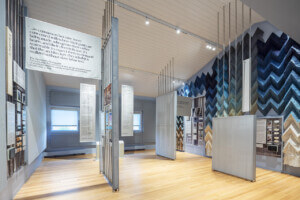The Public Art Fund has announced a thematic survey of Melvin “Mel” Edwards, a Houston-born artist, educator, and welder whose celebrated collective body of work touches down on themes of race, identity, and social injustice, will open at City Hall Park in Lower Manhattan on May 5. The historic exhibition, titled Melvin Edwards: Brighter Days, will run through November 28.
Based in Los Angeles during the formative stages of his career, Edwards, now 83, moved to New York City in the late 1960s ahead of a pioneering 1970 exhibition in which he became the first African-American sculptor to have a solo exhibition at the Whitney Museum of American Art. Edwards is best known for his muscular, abstract welded steel installations, including the Lynch Fragments series, that incorporate barbed wire, chains, pipe fittings, nails, and machine parts. The first work by Edwards commissioned by the nonprofit Public Art Fund was Tomorrow’s Wind in 1991, which was initially installed at Doris C. Freedman Plaza in Central Park and is now on view at Thomas Jefferson Park in East Harlem. In addition to Tomorrow’s Wind, three other works by Edwards are permanently installed across the city.
Edwards is now based in New Jersey and upstate New York and established a satellite studio in Dakar, Senegal, in 2000.
Brighter Days, which marks the first thematic survey of Edwards’ public sculpture, will feature a newly commissioned work alongside five sculptures created between 1970 and 1994. All of the works feature chains in some form, a frequent motif of Edwards representing bondage and oppression but also liberation and connection. The exhibition’s location at City Hall Park, site of the African Burial Ground in the 1700s and the recent Black Lives Matters protests again police brutality and systemic racism, is a potent one that the Public Art Fund noted bringing “additional layers of both resonance and optimism to Edwards’ work.”
“Over his long career Melvin Edwards has developed a singular sculptural language that melds large-scale abstraction with personal imagery and socially resonant themes. This exhibition brings together five key historical works with a new commission to explore the artist’s use of the chain motif over some fifty years,” said Public Art Fund curator Daniel S. Palmer in a statement. “Often connoting oppression or brutality, the chain-link also symbolizes connection and, especially when broken, liberation. Edwards has chosen to title the exhibition Brighter Days, suggesting that while we remain mindful of the past, we must also look to the future with optimism.”
The earliest completed work by Edwards featured as part of Brighter Days is Homage to Coco (1970), which was the first work by the artist to feature a rocking chair motif, a symbol of both domesticity and storytelling in African American communities. Per the Public Art Fund, the four other existing works that will be shown in the exhibition— Promise (1984), Before Words (1990), Ukpo. Edo (1993/1996) and Untitled (1993)— “elaborate and expand on the dominant motifs first established in earlier pieces such as Homage to Coco.” The sixth newly commissioned work, Song of the Broken Chains (2020), is a large-scale sculpture that “implies both oppression and connection, both literally through [the] imagery of chains, but also physically in their larger-than-life size.”
Like all Public Art Fund exhibitions, Brighter Days, an examination of a contemporary American artist who has long championed the power of art in the public realm, is free and open to the public. Bloomberg Philanthropies is the exhibition’s presenting sponsor with additional support provided in part by the Henry Moore Foundation and an award from the National Endowment for the Arts.











